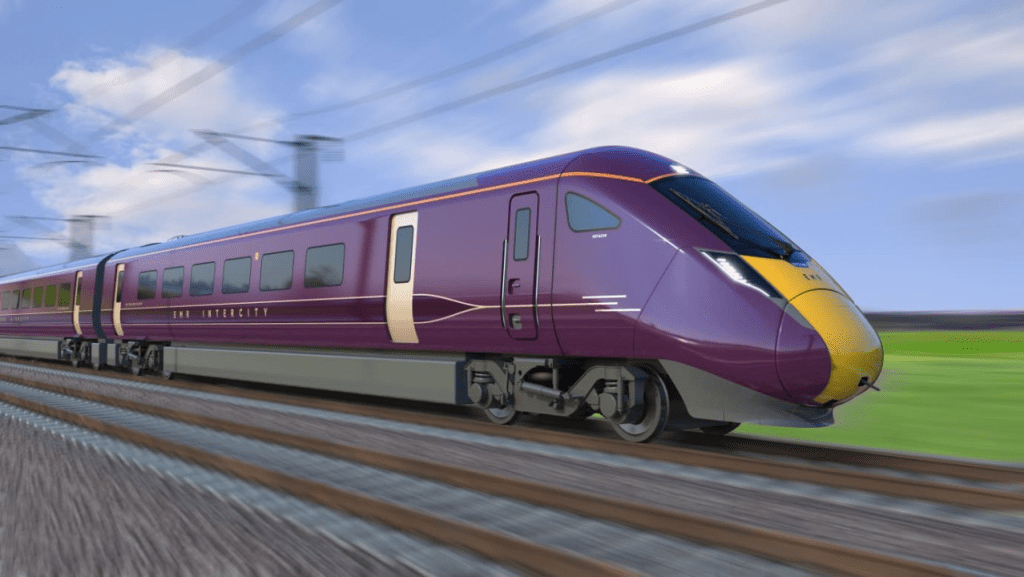Train travel is a popular choice for many, offering a smooth ride, scenic views, and a chance to sit back and relax. However, one aspect of train travel raises some eyebrows—the toilets. There’s a long-standing belief that train toilets are directly connected to the tracks, which, understandably, leads to questions about cleanliness and environmental impact. If the waste is discharged directly onto the tracks, how is it that the tracks remain relatively clean?
Let’s take a closer look at the reality behind train toilet systems, how they operate, and the measures taken to ensure cleanliness and environmental responsibility.

How Traditional Train Toilets Work: The Direct Discharge System
For decades, many trains around the world utilized a “direct discharge” system for their toilets. This design allowed waste to be expelled directly through a pipe beneath the toilet, onto the tracks below. While this approach may seem unhygienic, it was originally conceived for practical reasons.
1. Simplifying Waste Disposal on the Move
In a fast-moving train, especially during long journeys, managing waste disposal is a logistical challenge. The direct discharge system allowed trains to keep moving without needing to store waste in tanks or containers, thereby reducing the risk of unpleasant odors and water buildup in the restroom.
2. Minimizing Environmental Impact with Speed
Trains typically move at high speeds, which helps disperse waste quickly upon discharge. This minimizes the amount of waste that lingers on the tracks, as airflow distributes it across a wider area. Additionally, because train tracks often run through uninhabited areas, designers felt that the waste would have minimal impact on the environment.
Why Do the Tracks Stay Clean? Factors Behind the Perception
If waste from train toilets is discharged directly, why don’t the tracks look like a mess? A combination of regular maintenance, natural factors, and evolving technology plays a role in keeping the tracks clean and free from visible waste.
1. Regular Track Maintenance
Railway maintenance crews play a crucial role in ensuring that tracks remain clean and safe. Regular inspections and cleaning routines help maintain the condition of the tracks, clearing away any waste that might accumulate. This upkeep is vital not only for appearance but also for the safety and efficiency of train operations.
2. Nature’s Cleaning Powers
Environmental factors along railway routes can help reduce waste impact. Rain, for example, washes away residue, while wind disperses any waste particles. These natural elements dilute and disperse waste over time, which lessens the visible impact on tracks.

3. Advancements in Waste Disposal Technology
As technology has progressed, so has waste management on trains. Newer train models often use closed-system toilets that collect waste in sealed containers. These tanks are emptied and treated at designated stations, minimizing the need for direct discharge. This modern approach not only addresses cleanliness concerns but also aligns with heightened environmental standards.
4. Increased Environmental Awareness
Today, both passengers and railway companies are more conscious of environmental impacts. Railway operators increasingly prioritize eco-friendly solutions, and as a result, they’re investing in technology that minimizes pollution. This collective push towards sustainability encourages the industry to innovate and adopt new practices that reduce environmental impact while maintaining passenger comfort.
Evolving Train Toilet Designs: From Direct Discharge to Eco-Friendly Systems
The direct discharge system may have served its purpose in the past, but as environmental concerns and passenger expectations evolve, so does toilet technology on trains. The railway industry is shifting towards more sustainable solutions, with newer systems aimed at reducing environmental impact and improving hygiene.
1. Sealed Waste Containers
Many modern trains now feature sealed tanks that collect waste, which can then be processed at designated stations. This system ensures that waste is handled hygienically and doesn’t come into contact with the tracks. These tanks are designed to be odor-resistant and prevent the buildup of waste within the restroom.

2. Vacuum Flush Systems
Similar to those found on airplanes, vacuum flush toilets are becoming increasingly common on trains. These systems use suction to remove waste and store it in secure tanks. Vacuum systems not only conserve water but also eliminate the need for direct discharge, making them a cleaner and more eco-friendly alternative.
3. Biological Toilets: The Future of Waste Disposal
Some countries are experimenting with biological toilets on trains, which use bacteria to break down waste into harmless byproducts. These innovative toilets reduce waste to compost-like material, which can then be disposed of in an environmentally safe manner. Biological systems represent a promising step towards truly sustainable waste management for trains, aligning with growing global emphasis on eco-friendly practices.
Passenger Reactions and Social Media Buzz
The idea of train toilets connected directly to the tracks has sparked a lively discussion on social media. Some passengers express discomfort at the thought of using a system that releases waste so directly. Others, however, understand the practicality of this design, especially given the historical context.
On platforms like Twitter and TikTok, users share their experiences, sometimes with a mix of humor and surprise. One user commented, “I always wondered why I wasn’t supposed to use the train toilet at the station. Now it makes sense!” Another added, “I hope we see more eco-friendly trains soon, though—I’d feel better knowing I’m traveling green.”
Such reactions underscore the importance of advancing train toilet technology and reflect the growing desire for more sustainable travel options.
Looking Forward: Sustainable Innovations in Railway Sanitation
As technology and environmental awareness continue to evolve, so too will train toilet systems. The railway industry is actively pursuing innovations that balance hygiene, passenger comfort, and environmental responsibility.

1. Investing in Cleaner, Greener Systems
Railway companies worldwide are increasingly adopting toilet systems that limit environmental impact. Sealed tanks, vacuum flushes, and biological systems represent just a few of the advances being implemented. These technologies allow passengers to travel comfortably, knowing that their journey has a minimal environmental footprint.
2. Improving Passenger Experience
With each new innovation, the railway industry aims to improve the overall passenger experience. By offering cleaner, odor-free restrooms, trains become more appealing to travelers, especially those taking long journeys. Future developments will likely focus on creating a pleasant and hygienic experience that aligns with modern environmental standards.
3. Encouraging a Shift in Perspective
As passengers, we can appreciate the progress made in train toilet technology and recognize the efforts to balance convenience with sustainability. The journey from direct discharge to advanced waste management systems reflects an industry that is listening to its users and responding to their needs. This commitment to improvement ultimately enhances both the travel experience and the world around us.
Conclusion: A Clean Path Forward for Train Toilets
The notion of train toilets connecting directly to the tracks may seem outdated today, but it’s a reminder of the railway industry’s history and the challenges of waste management on the move. While older systems used direct discharge for practical reasons, the railway industry has embraced eco-friendly innovations that cater to modern expectations.
As train travel evolves, so too will its sanitation technology. We can look forward to a future where sustainable, hygienic, and environmentally responsible toilets are the norm. So next time you board a train, remember that the industry is working hard to ensure a cleaner, greener journey for you and generations to come.


